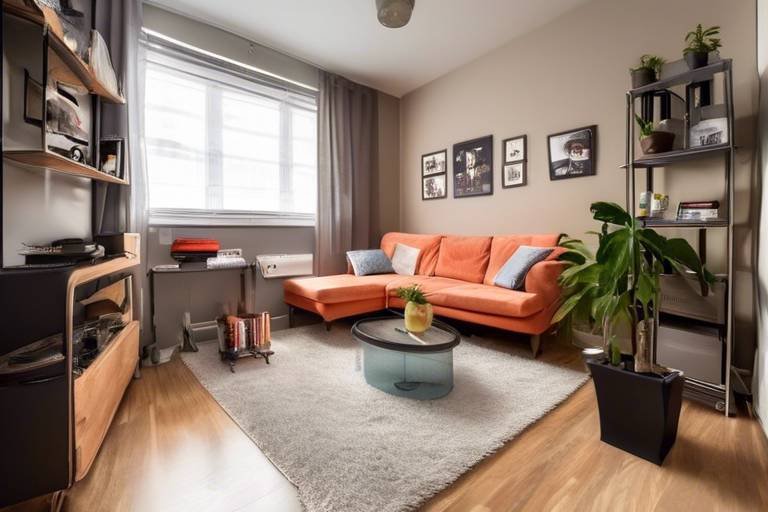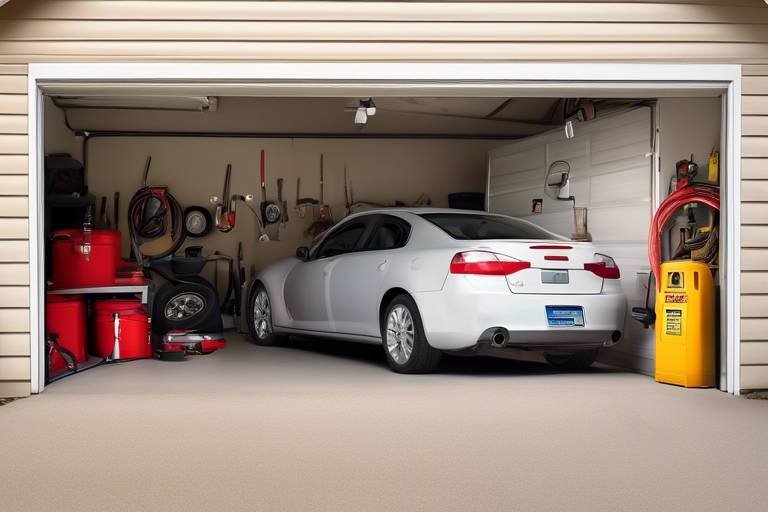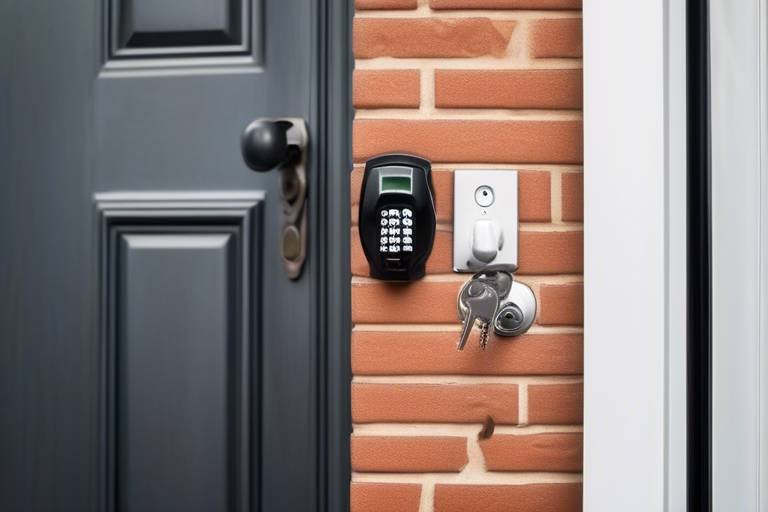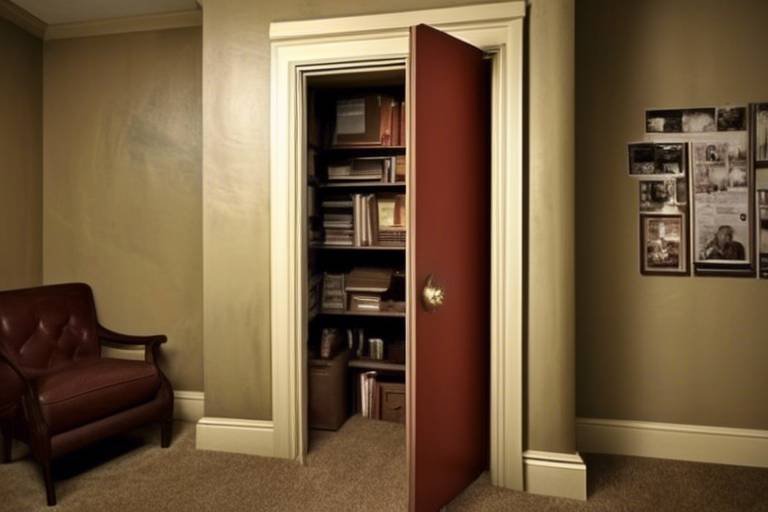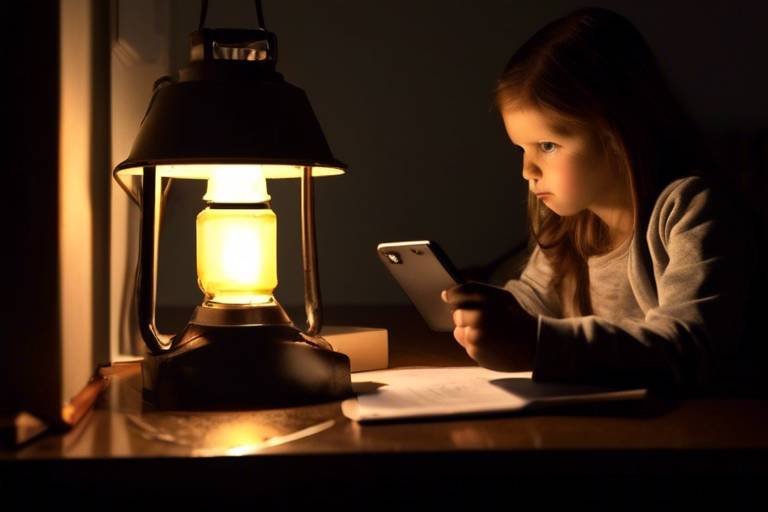Identifying Fall Hazards in Your Home
Every year, countless individuals experience falls within their own homes, leading to serious injuries and even fatalities. This alarming statistic makes it crucial for homeowners and renters alike to recognize and address fall hazards. But what exactly constitutes a fall hazard? Simply put, it’s anything that increases the risk of slipping, tripping, or losing balance. In this article, we will delve into common fall hazards, how to assess your home effectively, and implement necessary safety measures. Whether you live with young children, elderly family members, or just want to ensure your home is safe for yourself, understanding these hazards can make a world of difference.
Imagine your home as a sanctuary, a place where you can relax and feel secure. However, lurking within those familiar walls could be hidden dangers that threaten that peace of mind. From loose rugs that seem harmless to dimly lit hallways that make you feel like you’re navigating a maze, the potential for falls is everywhere. The good news is, with a little awareness and proactive measures, you can transform your living space into a safer environment for everyone. So, let’s embark on this journey together to identify and mitigate fall hazards in your home!
Understanding the most prevalent fall hazards in homes is the first step towards prevention. Here are some of the most common culprits:
- Loose Rugs: They may add a decorative touch to your home, but loose rugs can easily become tripping hazards, especially on hardwood or tile floors.
- Cluttered Walkways: Piles of shoes, bags, or any other items can obstruct pathways, making it easy to trip and fall.
- Poor Lighting: Dimly lit areas can hide potential hazards and make it difficult to see where you are walking.
By identifying these hazards, you can take significant steps to create a safer living environment. It’s all about being proactive and making small changes that can have a big impact on safety.
Now that you know what common fall hazards to look out for, it’s time to assess your home. A comprehensive evaluation can help you identify potential risks and make necessary improvements. Here’s a step-by-step guide to evaluating each room:
- Start at the Entryway: Check for any loose mats or clutter that could cause someone to trip.
- Inspect Hallways: Ensure that all walkways are clear and well-lit.
- Examine Stairs: Look for any loose railings or worn treads that need attention.
- Review Bathrooms: Identify any wet surfaces that could be hazardous.
- Check the Kitchen: Make sure spills are cleaned up promptly and that the floor is free of clutter.
By systematically assessing each area, you can uncover hidden risks that may not be immediately apparent.
Entryways and hallways are often high-traffic areas where falls can easily occur. It’s essential to identify any obstacles and ensure proper lighting in these spaces. A well-lit entryway not only welcomes guests but also allows everyone to navigate safely. Consider adding motion-sensor lights that automatically turn on when someone approaches, providing illumination when it’s needed most.
Effective lighting solutions can significantly reduce fall risks in entryways and hallways. Opt for brighter bulbs and consider installing lights at various heights to ensure even illumination. If you have a particularly dark corner, a small lamp can work wonders!
The type of flooring in your home can also impact fall risk. Non-slip surfaces are ideal, especially in areas prone to moisture. If you have carpets, make sure they have secure backing to prevent slipping. Remember, a little investment in flooring can save a lot in potential medical bills!
Stairs and steps are notorious for being common locations for falls. To minimize risks, ensure that handrails are sturdy and properly installed. Non-slip treads can be applied to steps to provide better traction, especially in homes with elderly residents. Regular maintenance is key; keep an eye out for any signs of wear and tear.
Bathrooms can pose significant fall hazards due to wet surfaces. To enhance safety in these areas, consider installing grab bars near the toilet and in the shower or bathtub. Non-slip mats can also provide additional traction on slippery floors. It’s all about making these spaces as safe as possible, so you can focus on what really matters – your well-being.
The kitchen is another area where falls can occur, often due to spills or clutter. Implementing organization and cleaning routines can help maintain a safer cooking environment. Keep frequently used items within reach to avoid climbing on chairs or counters, which can lead to falls.
Don’t forget about outdoor spaces, which also present fall risks. Uneven walkways, loose stones, and overgrown plants can all contribute to accidents. Regularly maintaining your exterior environment is crucial. Here are a few tips:
- Clear debris from walkways and patios.
- Repair any cracks or uneven surfaces.
- Ensure outdoor lighting is sufficient to illuminate pathways at night.
By taking these simple steps, you can create a safer outdoor space for yourself and your guests.
Q: What are the most common fall hazards in the home?
A: Common fall hazards include loose rugs, cluttered walkways, poor lighting, and wet surfaces, especially in bathrooms and kitchens.
Q: How can I make my stairs safer?
A: Ensure handrails are secure, add non-slip treads, and keep stairs free of clutter to minimize fall risks.
Q: Are there specific modifications for bathrooms?
A: Yes, installing grab bars and using non-slip mats can significantly enhance safety in bathrooms.
Q: What should I do if I notice a fall hazard?
A: Address it immediately! Remove obstacles, improve lighting, or make necessary repairs to ensure a safer environment.

Common Fall Hazards
This article explores common fall hazards within the home environment, providing insights on identification, prevention, and safety measures to ensure a safer living space for everyone, especially the elderly and children.
Understanding the most prevalent fall hazards in homes is crucial for prevention and creating a safer living environment for all inhabitants. Many of us might overlook the potential dangers lurking in our own homes, but a little awareness can go a long way. Loose rugs, cluttered walkways, and poor lighting are just a few examples of hazards that can lead to unfortunate accidents. Imagine stepping into a room and tripping over a rug that’s not secured to the floor—it's a scenario that can happen in the blink of an eye!
One of the most common culprits is loose rugs. These can slide around, creating an unstable walking surface. If you have rugs in your home, make sure they have a non-slip backing or consider securing them with double-sided tape. Another issue is cluttered walkways. Think about your daily routine. Do you have shoes, bags, or other items scattered in your pathways? This clutter can easily become a tripping hazard, especially for children and older adults. Keeping pathways clear is essential for safe navigation around your home.
Additionally, poor lighting can significantly increase the risk of falls. Dimly lit areas make it hard to see potential hazards, leading to missteps and accidents. It’s important to ensure that all areas of your home are well-lit, particularly stairs and hallways. You might want to consider using brighter bulbs or adding lighting fixtures in dark corners.
In summary, the key to preventing falls in your home lies in being proactive. By identifying and addressing these common hazards, you can create a safer environment for everyone. Remember, safety starts with awareness!
- What are the most common fall hazards in the home? Loose rugs, cluttered walkways, and poor lighting are among the most frequent hazards.
- How can I secure loose rugs? Use non-slip backing or double-sided tape to keep them in place.
- Why is lighting important for fall prevention? Good lighting helps you see potential hazards, reducing the risk of tripping or falling.

Assessing Your Home
Assessing your home for fall hazards is a crucial step in creating a safer environment for everyone, especially the elderly and children. Think of your home as a maze; every corner can hide a potential danger. By taking the time to evaluate each room, you can uncover those hidden risks and implement necessary changes. Start by walking through your home as if you were a visitor. This fresh perspective can help you notice things you might overlook in your daily routine.
Begin your assessment in the entryways and hallways, which are often the first places guests encounter. These high-traffic areas can quickly become cluttered with shoes, bags, or even furniture. Make sure to remove any obstacles that could trip someone up. Additionally, consider the lighting; dimly lit areas can hide potential hazards. You might want to ask yourself, "Can I see clearly in this space?" If the answer is no, it’s time to brighten things up.
Next, take a closer look at your stairs and steps. Stairs are notorious for being a fall risk, especially if they lack proper handrails or are poorly lit. Ensure that all steps are in good condition and free of any loose carpeting or debris. Installing non-slip treads can add an extra layer of safety. As you assess these areas, think of the stairs as a mountain; you wouldn't want to climb it without a sturdy rope, right? Handrails act as that rope, providing support and stability.
Don't forget the bathrooms, where wet surfaces can turn a simple trip into a serious fall. Look for opportunities to add grab bars near the toilet and in the shower. Non-slip mats are also a must-have; they can be the difference between a safe bath and an unexpected slip. Remember, the bathroom should be a sanctuary, not a hazard zone.
Finally, consider the outdoor environment. Paths, patios, and gardens can present their own set of challenges. Uneven walkways, loose stones, or overgrown vegetation can create tripping hazards. Regular maintenance and a keen eye for detail can transform your outdoor spaces into safe and enjoyable areas. Ask yourself, "Is this space welcoming or risky?" Your answer can guide you in making necessary changes.
To help you visualize the assessment process, here’s a simple table summarizing key areas to inspect:
| Area | Potential Hazards | Safety Measures |
|---|---|---|
| Entryways & Hallways | Clutter, Poor Lighting | Clear pathways, Install brighter bulbs |
| Stairs & Steps | Loose Carpeting, Lack of Handrails | Secure carpets, Install handrails |
| Bathrooms | Wet Floors, Lack of Support | Install grab bars, Use non-slip mats |
| Outdoor Areas | Uneven Surfaces, Debris | Regular maintenance, Clear pathways |
In conclusion, assessing your home for fall hazards is not just about identifying risks; it's about taking proactive steps to ensure the safety of everyone who enters your space. By systematically evaluating each area and implementing the necessary changes, you can create a home that is not only beautiful but also safe. So, grab a notepad and start your assessment today—your future self will thank you!
Q: How often should I assess my home for fall hazards?
A: It's a good idea to assess your home at least once a year or whenever you make significant changes, such as renovations or when new family members move in.
Q: What are some quick fixes for common fall hazards?
A: Quick fixes include securing loose rugs with double-sided tape, decluttering pathways, and installing brighter light bulbs in dim areas.
Q: Are there specific products that can help with fall prevention?
A: Yes! Look for non-slip mats, grab bars, and motion-sensor lights to enhance safety in your home.

Entryways and Hallways
Entryways and hallways are often the unsung heroes of our homes. They serve as the first impression when you walk in and the thoroughfare to every room. However, these high-traffic areas can also become dangerous if not properly maintained. Have you ever tripped over a shoe left by the door or stumbled in the dark trying to navigate to the kitchen? It’s all too common! By identifying and mitigating hazards in these spaces, we can significantly reduce the risk of falls.
One of the primary concerns in entryways and hallways is obstacles. Items like shoes, bags, or even decorative furniture can create unexpected trip hazards. It’s essential to keep these areas tidy and organized. Consider implementing a designated spot for shoes and bags to minimize clutter. A simple storage bench or a stylish basket can do wonders in keeping the space clear. Remember, a clean entryway not only enhances safety but also adds to the aesthetic appeal of your home!
Another critical factor is lighting. Poorly lit areas can turn a simple stroll into a perilous journey. Installing brighter bulbs or adding motion-sensor lights can dramatically improve visibility. Imagine walking into a well-lit hallway that welcomes you rather than one that leaves you guessing where the next step is. It’s a no-brainer! If you're feeling adventurous, consider using LED strip lights along the baseboards or under furniture for an added touch of flair and safety.
Moreover, let’s not forget about the flooring. The type of flooring you choose can play a vital role in preventing falls. Hard surfaces like tile or hardwood can be slippery, especially when wet. On the other hand, carpets can provide traction but may also pose a risk if they’re loose or frayed. Consider using non-slip mats or rugs with rubber backing to keep them securely in place. If you're renovating, opting for flooring materials that are specifically designed to reduce slip risks can be a game-changer.
To summarize, here are some key takeaways for enhancing safety in your entryways and hallways:
- Keep walkways clear of clutter and obstacles.
- Improve lighting with brighter bulbs and motion sensors.
- Choose flooring that minimizes slip risks, such as non-slip mats.
By taking these simple steps, you can transform your entryways and hallways into safe, welcoming spaces for everyone. Remember, safety doesn’t have to compromise style; a little attention can go a long way in creating a beautiful and secure home environment!

Lighting Solutions
When it comes to preventing falls in your home, effective lighting solutions play a pivotal role. Imagine walking through your home at night, stumbling over an unseen object because the light was too dim. It’s a scenario that can lead to unfortunate accidents, especially for the elderly or children. Thus, enhancing visibility in key areas is not just a good idea—it's essential!
First and foremost, consider the entryways and hallways. These are often the first places you navigate when entering your home, and they can easily become cluttered with shoes, bags, or other items. To combat this, install motion-sensor lights that illuminate as soon as someone walks through. This not only saves energy but also ensures that you have light exactly when you need it. Additionally, using brighter bulbs can significantly improve visibility. Look for LED bulbs that provide a warm light, making your space feel welcoming while ensuring you can see every corner.
Another area to focus on is the staircase. Stairs can be particularly treacherous, and poor lighting can exacerbate the risk of falls. Consider installing step lights that shine down on each step, or even backlit handrails that guide the way. This way, you can easily distinguish each step, reducing the likelihood of missteps. Furthermore, if you have a staircase that turns, ensure the landing area is well-lit as well; it’s often a forgotten spot that can lead to accidents.
In addition to these solutions, think about the bathroom, where falls are common due to wet surfaces. Installing bright, waterproof lighting can help mitigate this risk. Consider adding lighted mirrors or sconces that provide ample lighting around the sink area, making it easier to see and navigate. If you have a bathroom with a shower or tub, a light switch outside the door can ensure you turn on the light before stepping inside.
Finally, don’t overlook outdoor lighting. Pathways and entry points should be well-lit to prevent falls before they even happen. Solar-powered garden lights can be a great addition, illuminating your path without the need for wiring. Make sure these lights are positioned to shine directly on walkways, and consider using motion-sensor lights for added security and visibility at night.
In summary, implementing these lighting solutions can drastically reduce the risks of falls in your home. By ensuring that all areas are well-lit, you not only create a safer environment but also enhance the overall ambiance of your living space. So, take a moment to evaluate your lighting situation—your safety is worth it!
- What types of lighting are best for preventing falls? Bright, motion-sensor lights are ideal for entryways, hallways, and stairs. LED bulbs are also recommended for their brightness and energy efficiency.
- How can I improve lighting in my bathroom? Use bright, waterproof fixtures and consider lighted mirrors for better visibility around sinks and showers.
- Are outdoor solar lights effective? Yes, they can illuminate pathways and entry points, helping to prevent falls outside.

Flooring Considerations
When it comes to fall prevention in your home, the choice of flooring is a crucial factor that often gets overlooked. Imagine walking across a slippery surface; it's not just a minor inconvenience—it can lead to serious injuries, especially for the elderly and children. Therefore, selecting the right flooring material is essential for creating a safe environment. Non-slip surfaces are your best friends in this endeavor. For instance, textured tiles and vinyl flooring can provide the grip needed to prevent slips, while carpets with secure backing can absorb impact and reduce the likelihood of falls.
Additionally, consider the maintenance aspect of your flooring. Regular upkeep can make a significant difference. For example, if you have hardwood floors, ensure they are kept clean and free of dust or spills that can create hazards. In contrast, carpets should be vacuumed regularly, and any loose edges should be secured to avoid tripping. It's not just about installing the right flooring; it's also about maintaining it to keep your home safe.
Now, let’s delve into some specific flooring options and their benefits:
| Flooring Type | Benefits | Considerations |
|---|---|---|
| Vinyl Flooring | Water-resistant, easy to clean, and available in non-slip varieties. | May not be as durable as other options. |
| Carpet | Soft underfoot, reduces noise, and provides insulation. | Can be difficult to clean and may harbor allergens. |
| Tile | Durable and available in textured options for better grip. | Can be cold and hard underfoot; requires sealing to prevent slipping. |
| Hardwood | Timeless appeal, can be refinished, and adds value to your home. | Can be slippery; consider adding area rugs for safety. |
In summary, while the aesthetics of flooring are important, the paramount concern should always be safety. By choosing the right materials and maintaining them properly, you can significantly reduce the risk of falls in your home. Remember, your home should be a sanctuary, and ensuring it is safe for all inhabitants is a vital part of that vision.
- What are the best flooring options for fall prevention?
Non-slip vinyl, textured tiles, and carpets with secure backing are excellent choices for preventing falls. - How often should I maintain my flooring?
Regular maintenance should be done weekly, with deep cleaning at least once a month to ensure safety. - Can I use area rugs to enhance safety?
Yes, but ensure they have non-slip backing to prevent them from sliding around. - Are there any flooring types I should avoid?
Highly polished surfaces can be slippery, so it’s best to avoid them, especially in areas prone to moisture.

Stairs and Steps
When it comes to fall hazards in the home, are often the most overlooked culprits. These essential features of our homes can become dangerous if not properly maintained or equipped with the right safety measures. Imagine navigating a flight of stairs in dim lighting or, worse yet, with loose carpeting—it's a recipe for disaster! To ensure safety, it’s crucial to evaluate and enhance your staircases with thoughtful modifications.
First and foremost, installing handrails on both sides of the stairs is one of the simplest yet most effective ways to prevent falls. Handrails provide support and stability, especially for the elderly or those with mobility issues. Make sure that these rails are sturdy and installed at a height that is comfortable for users. Additionally, consider the texture of the handrails; a non-slip surface can further reduce the risk of slipping.
Next, let’s talk about non-slip treads. Adding these to each step can greatly reduce the chances of slipping, especially in homes where moisture might be an issue. Whether you opt for adhesive treads or choose to install them during a renovation, they are a small investment that pays off in safety. If you have carpeted stairs, ensure that the carpet is well-secured and free from wrinkles or fraying edges that could catch a foot and cause a stumble.
Another critical aspect is lighting. Properly lit stairs can make a world of difference. Use bright, energy-efficient bulbs and consider installing motion-sensor lights that illuminate the path as someone approaches. This not only enhances visibility but also ensures that no one is navigating the stairs in the dark. If possible, place light switches at the top and bottom of the stairs for easy access.
Moreover, keeping stairs free of clutter is paramount. A stray shoe or a misplaced toy can turn a simple trip up or down the stairs into a serious fall. Regularly check the stairway for any items that may have been left behind and encourage family members to do the same. Creating a habit of keeping stairways clear can significantly reduce the risk of accidents.
In summary, when it comes to stairs and steps, a little attention goes a long way. By installing handrails, adding non-slip treads, ensuring adequate lighting, and keeping the area clutter-free, you can create a safer environment for everyone in your home. Remember, safety is not just a priority; it should be a way of life!
- What are the most common causes of falls on stairs? Falls on stairs can be caused by poor lighting, loose carpeting, clutter, and lack of handrails.
- How can I make my stairs safer for elderly family members? Install handrails, use non-slip treads, ensure good lighting, and keep the area free from clutter.
- Are there specific types of lighting recommended for stairways? Yes, bright LED bulbs and motion-sensor lights are excellent choices for stairway lighting.
- How often should I check my stairs for hazards? It's a good practice to check your stairs regularly, at least once a month, and after any major weather events that could affect safety.

Bathroom Safety
Bathrooms can be a hidden danger zone in our homes, especially for the elderly and young children. With their slippery surfaces and often cramped spaces, they present a unique set of challenges when it comes to preventing falls. Did you know that most slip and fall accidents occur in the bathroom? It’s essential to recognize this risk and take proactive steps to safeguard these areas. By making a few simple adjustments, you can create a much safer environment that minimizes the chances of accidents occurring.
One of the most effective ways to enhance bathroom safety is by installing grab bars. These sturdy bars can be placed near the toilet and inside the shower or bathtub, providing much-needed support when getting in and out of these spaces. Imagine trying to balance on one foot while reaching for a slippery soap bar; grab bars can be a lifesaver in such moments. Furthermore, it’s crucial to ensure that these bars are installed correctly to handle weight and provide reliable support.
Another significant risk factor in bathrooms is the presence of wet surfaces. Water from showers and sinks can create a perilous situation, especially on tile or vinyl flooring. To combat this, consider using non-slip mats both inside and outside the shower. These mats are designed to grip the floor and provide traction, reducing the likelihood of slipping. Additionally, placing a mat in front of the sink can help absorb excess water and keep the floor dry.
Lighting is another critical aspect that often gets overlooked. A well-lit bathroom can make all the difference in preventing falls. Ensure that you have bright, adequate lighting that illuminates all corners of the space. Consider using motion-sensor lights that turn on automatically when someone enters the room, providing instant visibility without fumbling for switches. This can be particularly helpful during nighttime visits when visibility is crucial.
Lastly, organization plays a vital role in maintaining a safe bathroom environment. Clutter can easily lead to trips and falls, so it’s essential to keep items like towels, toiletries, and cleaning supplies stored away properly. Use shelves and cabinets to keep the floor clear. For frequently used items, consider using easy-to-reach storage solutions that minimize the need to bend down or stretch too far. Remember, a tidy bathroom is not just more pleasant; it’s also significantly safer!
By focusing on these key areas—grab bars, non-slip mats, adequate lighting, and organization—you can significantly reduce the risk of falls in your bathroom. It’s all about creating a space that is not only functional but also safe for everyone who uses it. So, take a moment to assess your bathroom today. Are there any changes you can make to enhance safety? Your future self will thank you!
- What are grab bars, and where should I install them?
Grab bars are sturdy bars that provide support when entering or exiting the bathtub or toilet. They should be installed near the toilet and inside the shower or bathtub. - How can I prevent my bathroom floor from getting slippery?
Using non-slip mats and ensuring that any spills are cleaned up immediately can help keep your bathroom floor safe. - Is it necessary to have bright lighting in the bathroom?
Yes, bright lighting is essential for visibility and can help prevent accidents, especially in the evenings. - How can I keep my bathroom organized?
Use shelves, cabinets, and easy-to-reach storage solutions to keep items off the floor and reduce clutter.

Kitchen Precautions
The kitchen is often considered the heart of the home, where delicious meals are prepared and family gatherings occur. However, it can also be a hotspot for falls and accidents. To create a safer cooking environment, it’s essential to recognize the common hazards that lurk in this busy space. One of the most significant risks comes from spills. Whether it’s water from the sink, oil from a pan, or food debris on the floor, these can create slippery surfaces that lead to nasty falls. So, how can we tackle this issue effectively?
First and foremost, maintaining a clean kitchen is crucial. Regularly wiping down surfaces and promptly cleaning up any spills can significantly reduce the risk of slipping. But cleanliness is just one piece of the puzzle. Consider the layout of your kitchen. Is it cluttered with pots, pans, and utensils? A crowded kitchen can lead to trips and falls. To combat this, implement organizational strategies. Utilize cabinets, drawers, and shelves efficiently to keep the countertops clear. This not only provides a safer environment but also makes cooking more enjoyable!
Another important aspect to consider is the flooring. The type of flooring you have can greatly influence fall risks. For instance, tiles can be slippery when wet, while carpets can be tripping hazards if they are not secured properly. If you have tiles, consider placing non-slip mats in areas prone to spills, such as near the sink or stove. Additionally, if you have rugs, ensure they have non-slip backing to prevent them from sliding around. It’s all about creating a stable ground to work on while you whip up your culinary masterpieces!
Lastly, don’t underestimate the importance of proper footwear while cooking. Wearing shoes with non-slip soles can provide much-needed traction, especially when you’re rushing around. Think of your kitchen as a dance floor; you wouldn’t want to slip and fall while performing your best moves, right? So, slip on those sturdy shoes and keep your feet safe while you cook up a storm!
In summary, kitchen safety is paramount for preventing falls. By maintaining cleanliness, organizing your space, choosing the right flooring, and wearing appropriate footwear, you can create a safer cooking environment for everyone. Remember, a little precaution goes a long way in ensuring that your kitchen remains a place of joy rather than a source of accidents.
- What are the most common fall hazards in the kitchen?
Common hazards include spills on the floor, cluttered countertops, and slippery flooring.
- How can I make my kitchen safer for elderly family members?
Ensure that the kitchen is well-lit, remove clutter, and consider using non-slip mats.
- Is it necessary to have non-slip flooring in the kitchen?
While not mandatory, non-slip flooring can significantly reduce the risk of falls.
- What type of shoes should I wear while cooking?
Opt for shoes with non-slip soles to provide better traction and support.

Outdoor Fall Hazards
When we think about fall hazards, our minds often drift indoors. However, outdoor spaces can be just as treacherous, if not more so. Imagine stepping outside into your garden or driveway, only to trip over an uneven surface or a misplaced garden tool. It’s essential to recognize that the risks of falling extend beyond the four walls of your home. can stem from various sources, including:
- Uneven Walkways: Cracks, raised edges, or uneven paving stones can create trip hazards.
- Slippery Surfaces: Rain, snow, or ice can make outdoor surfaces dangerously slick.
- Debris and Clutter: Leaves, branches, and garden tools left lying around can easily cause someone to trip.
To maintain a safe outdoor environment, regular maintenance is key. Walkways should be kept clear and repaired promptly. Consider adding a non-slip coating to outdoor stairs and pathways, especially if they tend to get wet. Additionally, it’s wise to keep an eye on the weather; a rainy day can quickly turn your outdoor space into a slip-and-slide. You wouldn’t want to turn a simple stroll into a trip to the emergency room!
Another vital aspect to consider is lighting. Just like indoors, poor lighting can lead to falls outdoors as well. Make sure that your entryways, porches, and pathways are well-lit. Installing solar-powered lights along walkways can be an excellent way to enhance visibility without breaking the bank. The last thing you want is to navigate your garden in the dark, risking a tumble over that pesky garden gnome you forgot to move!
Here's a quick overview of outdoor fall hazards and prevention measures:
| Outdoor Hazard | Prevention Measures |
|---|---|
| Uneven Walkways | Regularly inspect and repair surfaces to ensure evenness. |
| Slippery Surfaces | Apply non-slip treatments and clear ice or snow promptly. |
| Debris and Clutter | Keep outdoor areas tidy and free of obstructions. |
| Poor Lighting | Install adequate lighting and consider motion-sensor lights. |
In conclusion, while we often focus on indoor safety, it’s crucial to remember that outdoor spaces can harbor just as many fall hazards. By regularly assessing your outdoor environment, addressing potential risks, and implementing effective safety measures, you can ensure a safer experience for everyone in your household. So, before you head outside, take a moment to survey your space. Your future self will thank you!
Q: What are some common outdoor fall hazards?
A: Common outdoor fall hazards include uneven walkways, slippery surfaces, debris, and poor lighting. Regular maintenance and proper lighting can help mitigate these risks.
Q: How can I make my outdoor spaces safer?
A: To enhance safety, keep walkways clear, repair any uneven surfaces, apply non-slip treatments, and ensure adequate lighting in all outdoor areas.
Q: Are there specific lighting solutions recommended for outdoor areas?
A: Yes, solar-powered lights and motion-sensor lights are excellent options for improving visibility and safety in outdoor spaces.
Frequently Asked Questions
- What are the most common fall hazards in the home?
Common fall hazards include loose rugs, cluttered walkways, poor lighting, and uneven flooring. Recognizing these risks is the first step in preventing falls, especially for vulnerable individuals like the elderly and children.
- How can I assess my home for fall risks?
Start by evaluating each room systematically. Look for obstacles in entryways and hallways, check the lighting, and inspect staircases. Consider creating a checklist to ensure you don’t miss any potential hazards.
- What safety measures should I implement in my bathroom?
To enhance bathroom safety, consider installing grab bars near the toilet and in the shower, using non-slip mats, and ensuring that surfaces are dry. These modifications can significantly reduce the risk of falls.
- Are there specific lighting solutions that can help prevent falls?
Yes! Motion-sensor lights are fantastic for entryways and hallways, as they illuminate the area when someone approaches. Additionally, using brighter bulbs can help improve visibility and reduce the chances of tripping.
- What flooring options are best for fall prevention?
Non-slip surfaces are ideal for minimizing fall risks. Carpets with secure backing, vinyl flooring, or textured tiles can provide better traction and help keep everyone safe, particularly in high-traffic areas.
- How can I make my kitchen safer from falls?
Keep the kitchen organized and clean up spills immediately to avoid slippery surfaces. Consider using non-slip mats in areas where water is likely to accumulate, and ensure that pathways are clear of clutter.
- What outdoor hazards should I be aware of?
Outdoor fall hazards include uneven walkways, slippery surfaces, and poorly maintained stairs. Regularly inspect your outdoor areas and make necessary repairs, such as filling in cracks or adding non-slip surfaces.


